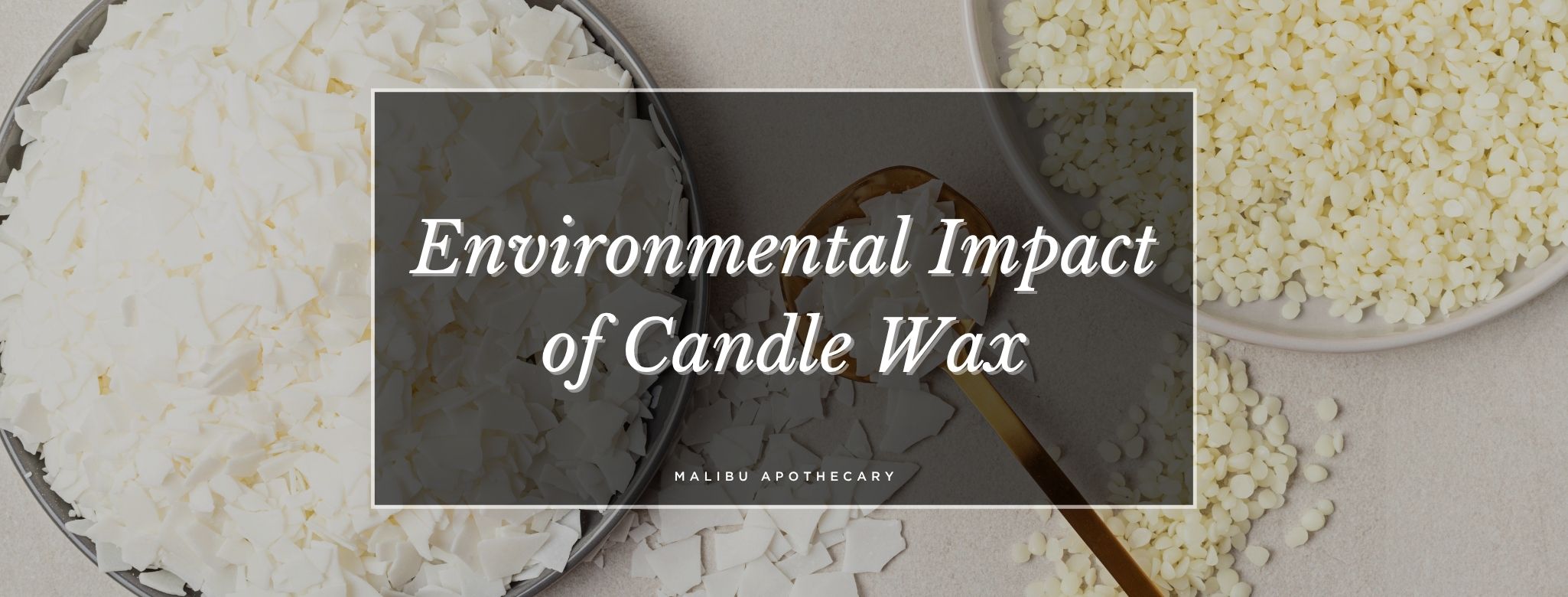Candle Wax Environmental Impact: A Comprehensive Guide
As the warm glow of candlelight fills our homes, it's crucial to consider the environmental footprint of the candles we burn. The type of wax used in candles can significantly impact the planet, from the sourcing of raw materials to the emissions released during burning. In this comprehensive guide, we'll explore the environmental impacts of various candle waxes, empowering you to make informed, eco-conscious choices.

Paraffin Wax: A Petroleum-Based Concern
Paraffin wax, derived from petroleum, is one of the most commonly used waxes in candle-making. However, its environmental impact is a cause for concern:- Non-Renewable Source: Paraffin wax is a non-renewable resource, contributing to the depletion of finite fossil fuels.
- Emissions: When burned, paraffin candles release harmful volatile organic compounds (VOCs) like benzene and toluene, contributing to indoor air pollution and potential health risks.
- Non-Biodegradable: Paraffin wax is not biodegradable, meaning it can persist in the environment for an extended period, adding to waste accumulation.
Soy Wax: A Renewable and Biodegradable Alternative
Soy wax, made from hydrogenated soybean oil, offers a more sustainable option for candle enthusiasts:- Renewable Resource: Soybeans are a renewable crop, making soy wax a more environmentally friendly choice.
- Biodegradable: Soy wax is biodegradable, reducing its environmental impact when disposed of properly.
- Cleaner Burning: Soy candles burn cleaner, producing less soot and fewer emissions compared to paraffin candles.
- Considerations: Responsible sourcing practices are essential to ensure soy cultivation does not contribute to deforestation or excessive pesticide use.
Beeswax: A Natural and Sustainable Option
Beeswax, a natural wax produced by honeybees, offers a sustainable and eco-friendly choice for candle lovers:- Renewable Resource: Beeswax is a renewable resource, as long as beekeeping practices are sustainable and ethical.
- Cleaner Burning: Beeswax candles burn cleanly, releasing negative ions that can help purify indoor air.
- Biodegradable: Beeswax is biodegradable and can be composted, reducing waste.
- Considerations: Responsible beekeeping practices are crucial to maintain healthy bee populations and ecosystems.
Coconut Wax: A Tropical Sustainable Choice
Coconut wax, derived from coconut oil, is a natural and sustainable option for candle-making:- Renewable Resource: Coconuts are a renewable crop, making coconut wax an eco-friendly choice.
- Biodegradable: Coconut wax is biodegradable, reducing its environmental impact when disposed of properly.
- Cleaner Burning: Coconut wax candles burn cleanly, producing minimal soot and emissions.
Palm Wax: A Controversial Contender
Palm wax, made from palm oil, is a renewable resource but has a controversial environmental impact:- Deforestation Concerns: Unsustainable palm oil production can lead to deforestation and habitat destruction, particularly in tropical regions.
- Biodiversity Loss: Irresponsible palm oil cultivation can threaten the survival of endangered species and disrupt delicate ecosystems.
- Sustainable Sourcing: Opting for palm wax certified by organizations like the Roundtable on Sustainable Palm Oil (RSPO) can help mitigate these concerns.
Conclusion: Mindful Choices for a Sustainable Future
As conscious consumers, we have the power to make a positive impact through our candle choices. By opting for eco-friendly waxes like soy, beeswax, coconut, or sustainably sourced palm wax, we can reduce our environmental footprint and contribute to a more sustainable future. Remember to prioritize candles made from natural, renewable, and biodegradable materials, and always consider the sourcing practices behind the products you purchase. By embracing mindful candle consumption, we can create warm and inviting spaces while preserving the beauty and health of our planet for generations to come.Read more

It's the last Monday of May and the peace of a long weekend continues and the anticipation for the start of summer builds. Yet, Memorial Day is more than just a time for barbecues and sales. It is ...

Are you looking for a unique and creative experience in Dallas? Look no further than Malibu Apothecary's custom candle making classes! Whether you're a local or just visiting, our workshops offer ...

Leave a comment
All comments are moderated before being published.
This site is protected by hCaptcha and the hCaptcha Privacy Policy and Terms of Service apply.